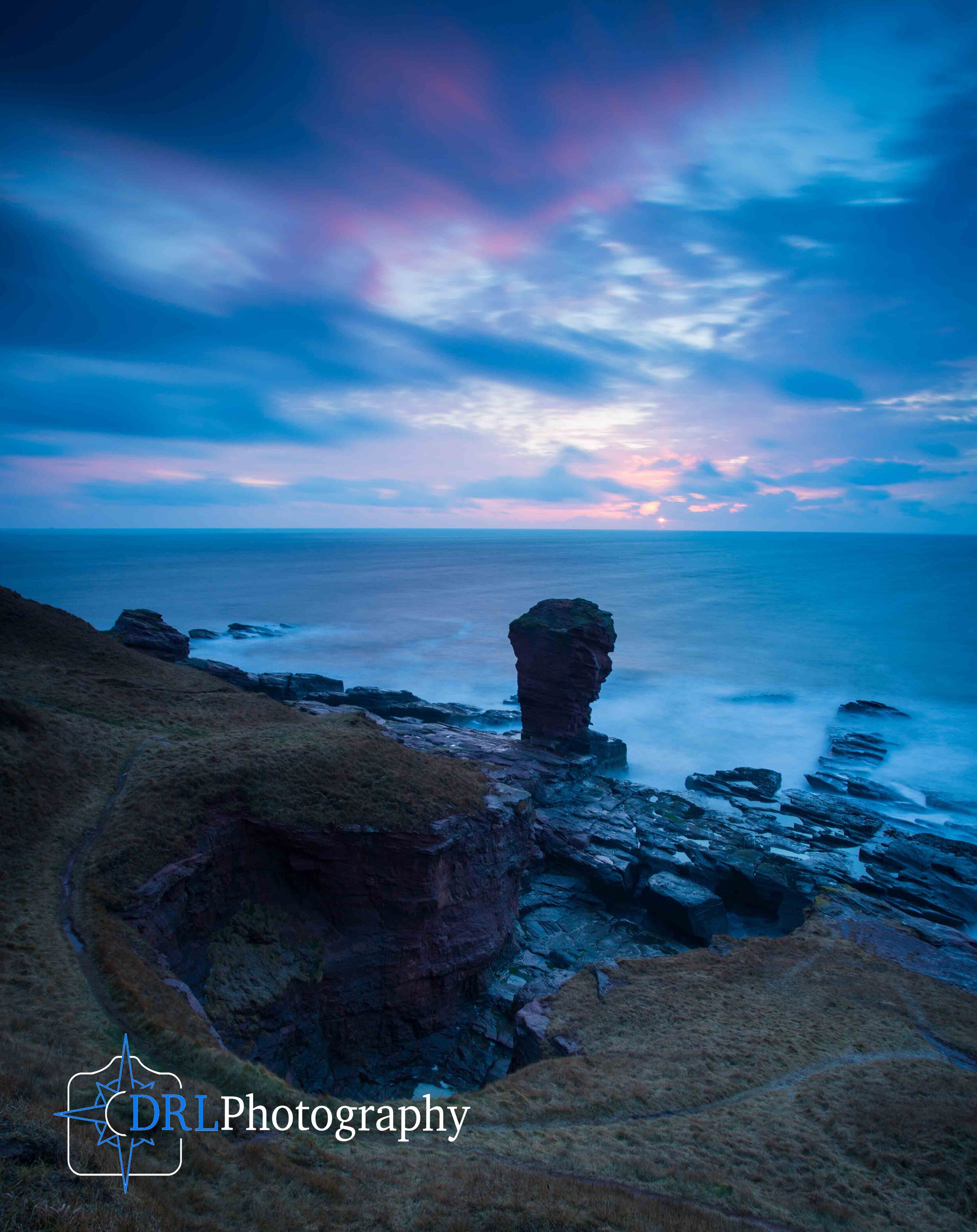How to Plan a Landscape Photography Photoshoot
One of the hardest things I have had to do is learn how to plan a landscape photography photoshoot. I couldn’t find a lot of information about how professional landscape photographers knew to go where to get the images that they want.
But over the last year I have come to create my own system of planning my images, and that is what I am going to share with you.
When I went to the Isle of Skye (check out the gallery) for a weekend with professional landscape photographer Glen Campbell of Lightstalker Adventures he gave me a lot of helpful advice and information about some of his techniques for planning a photoshoot.
Since then I have been refining this and it has evolved and will probably continue to evolve in the future. In general I have 3 steps:
Step 1 - Inspiration
My first step is to get some inspiration. I get inspiration from a multitude of different sources.
The Outdoor Photography Magazine is amazing for this, I get to see different photographer’s projects and vision for photographing the natural world. From this publication I can get inspiration for different environments, such as woodland or by the sea, as well as inspiration for future locations that I need to research more.
The magazine also introduces me to new photographers work who I admire, which will often lead me to look them up on social media and on their own website. From their website I might get some more inspiration for locations or projects.
I will also browse the photography section of my local book store for any book projects that inspire me. If I encounter a book by a photographer that I have heard of from a magazine or online, I will often look through it and might buy a copy if I like what I see.
Social Media can be a great source of inspiration with visual heavy sources such as Pinterest or Instagram. Both social media outlets are really useful for finding material that inspires, but can be a bit difficult to use for the next step: research.
What inspires me most often, however, is the natural world around me. Driving or walking in my local area can often throw inspiration at me. That’s something that a lot of photographers find and base their projects on.
Your local environment can provide inspiration, you have time for steps 2 and 3, before getting that image exactly as you want it. By the end of this you may realise that planning a photoshoot is not that difficult, and what takes time is the waiting for everything to be right.
The last way I get inspiration is to look at topographical maps and using 3D modelled maps online, to get an idea of the features of the landscape. This also helps me find any possible waterfalls or lakes for images. This is the way I find places that haven’t been photographed before. After finding their locations on the map I will go to step 2 and if that doesn’t give a lot of information, I will most likely be able to create something unique.
Step 2 - Research
After I’ve found some inspiration, the next step is research. Again I will use social media to see a multitude of images related to the one that inspired me. For example:
I see an image of the Old Man of Storr on Skye, a brilliant image but I’m unfamiliar with the rest of the area surrounding it.
So, I will conduct a social media search to see various images. I can see amazing ones of Old Man at sunrise, sunset, in black and white, in the rain, etc. But I can also see images that are not brilliant. What I am doing though, is learning about the location that I want to visit. I’m getting an idea of what works and what doesn’t. This will inform step 3 - planning.
So, after getting an idea of what works for the location and what doesn’t. I also need to find out how to get, how long it takes to get in to position and is there any way that I can create something unique.
This is when I turn to the internet, I look for blogs like this one by other photographers recounting their experience of the location or providing a location guide, like the ones that I feature here. These photoblogs can often provide me with more inspiration and research at the same time. From other locations that the photographer has visited.
After looking at other people’s experiences, I will look on the map for the location and the route/path that gets me into position. Once I’ve found the path I will look at the gradient of the path and calculate the distance from the parking point to the position I would like to be in.
From this I can calculate a rough estimate of the time it will take me to hike into position. To be honest, I’m a pretty slow hiker and need to pause to catch my breath, especially when carrying photography equipment. But I can walk all day, no problem. It just takes me a little longer to get there. Once I’ve found out how long the hike will take me, I will then run a Google maps search to find out how long it will take me to get to the starting point from my home.
By the end of step 2, I now know what position I want to be in, how long the hike will take to get to that position and how long it will take for me to get there from my home. Really important knowledge when planning a photoshoot, especially for step 3.
Step 3 - Planning
Steps 1 and 2 were about finding the location and how to get there, this last step is the actual planning of the image that I want to capture. From step 2 I will know how the location looks in certain conditions, using that knowledge I will consider what conditions I want for my image.
Do I want a sunset, sunrise, in the rain, or does it not really matter?
Weather is the biggest condition that you will have no control over and you will just have to roll with it. But knowing what you want makes getting it easier. When the weather conditions are met, you already know how long it will take you to get into position, and you can leave at the correct time.
I use various different weather apps on my phone to monitor the conditions in the different areas I have on my shoot list. When one looks like it will be correct I plan, when I should leave on that day, what equipment I will need to take and then I will go there.
So, I know what weather I want for the location the other thing to consider is light. The best app for this is the collection offered by The Photographer’s Ephemeris, which gives a multitude of information but the most important is when sunrise and sunset and their angles on the landscape, which changes through the seasons.
They’ve also produced the really useful Photographer’s Ephemeris 3D, which gives a 3D modelled topographic map and how the light will hit each and every bump in the landscape through time. Really useful for planning the perfect lighting to go with the perfect weather.
Now you know: the location you want to shoot, how to get there, how long it takes to get there, what weather and light you want for the perfect image, and all you have to do is wait for everything to fall into place.
Conclusion
These 3 steps are what I use most often to find locations and to plan a photoshoot. Once you’ve planned for the location, what takes the most time and is most difficult to learn, is the patience required to wait for all the correct conditions.
This will often result in a few failures but eventually all the conditions will be met.
Although, in step 1 you should have obtained enough inspiration to make use of whatever conditions are handed to you. Especially if you have limited time in a location because you are visiting it on holiday.
But with these 3 steps you will have a much better understanding of picking locations and getting the right conditions. Go put it to practice!
Related Articles
Written by Daniel Long
Daniel Long created DRL Photography as a place to showcase his work as a photographer. Daniel has learnt a lot about photography and wishes to impart this knowledge with you, although the world is an ever changing place and he always says “you can never learn everything.” So as he makes his way, he continues to learn knew techniques, skills and information about photography. He focuses on Landscape and Wildlife photography and Daniel has a special focus on Scotland, his home away from home. As well as writing about photography and taking pictures out in the field, Daniel offers guided photography days so he can share his knowledge and locations in an effort to give his clients the best opportunities possible. Have a browse around this website to see his images, guided experiences and articles about photography. If you have any questions don’t hesitate to get in contact.




















